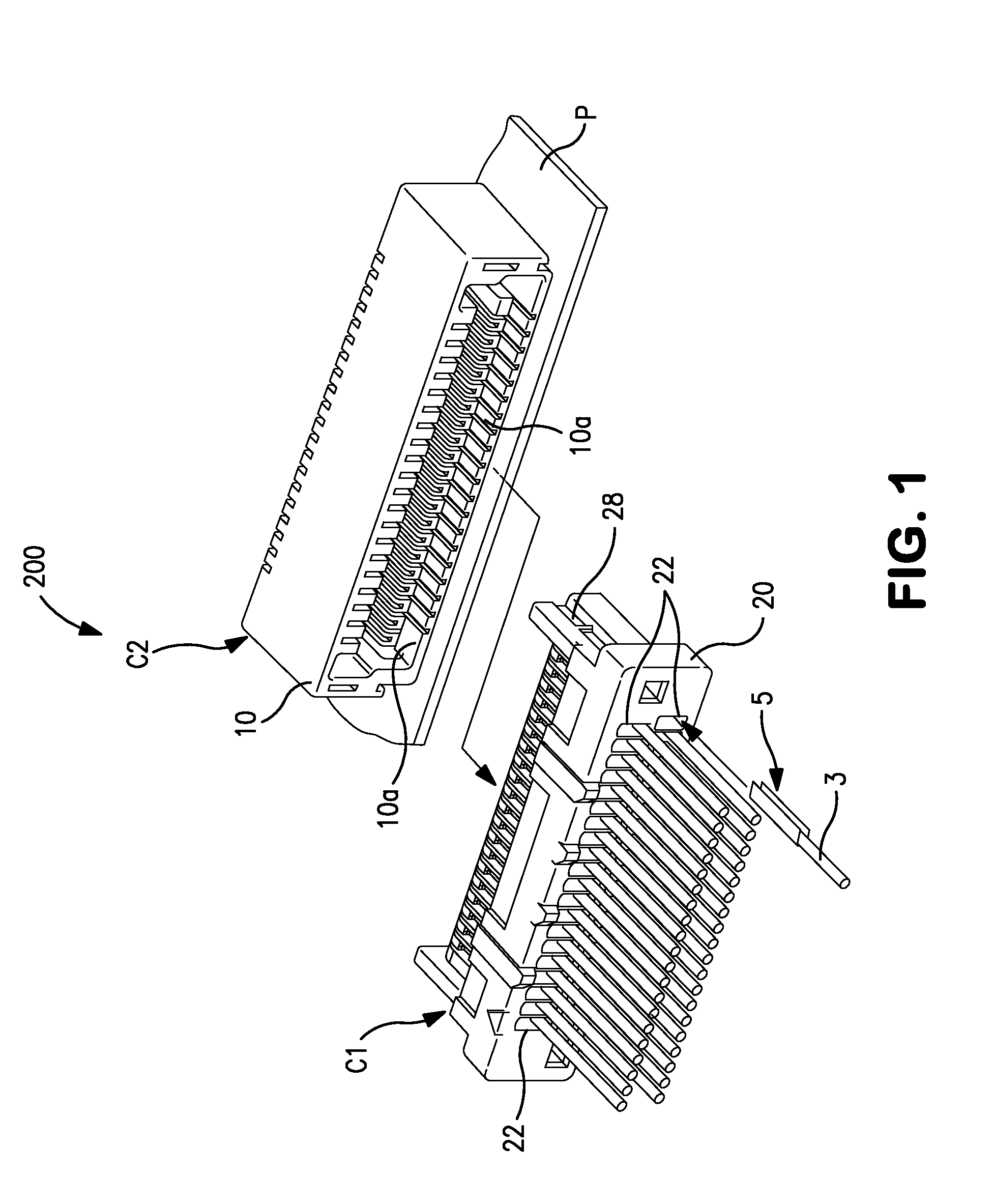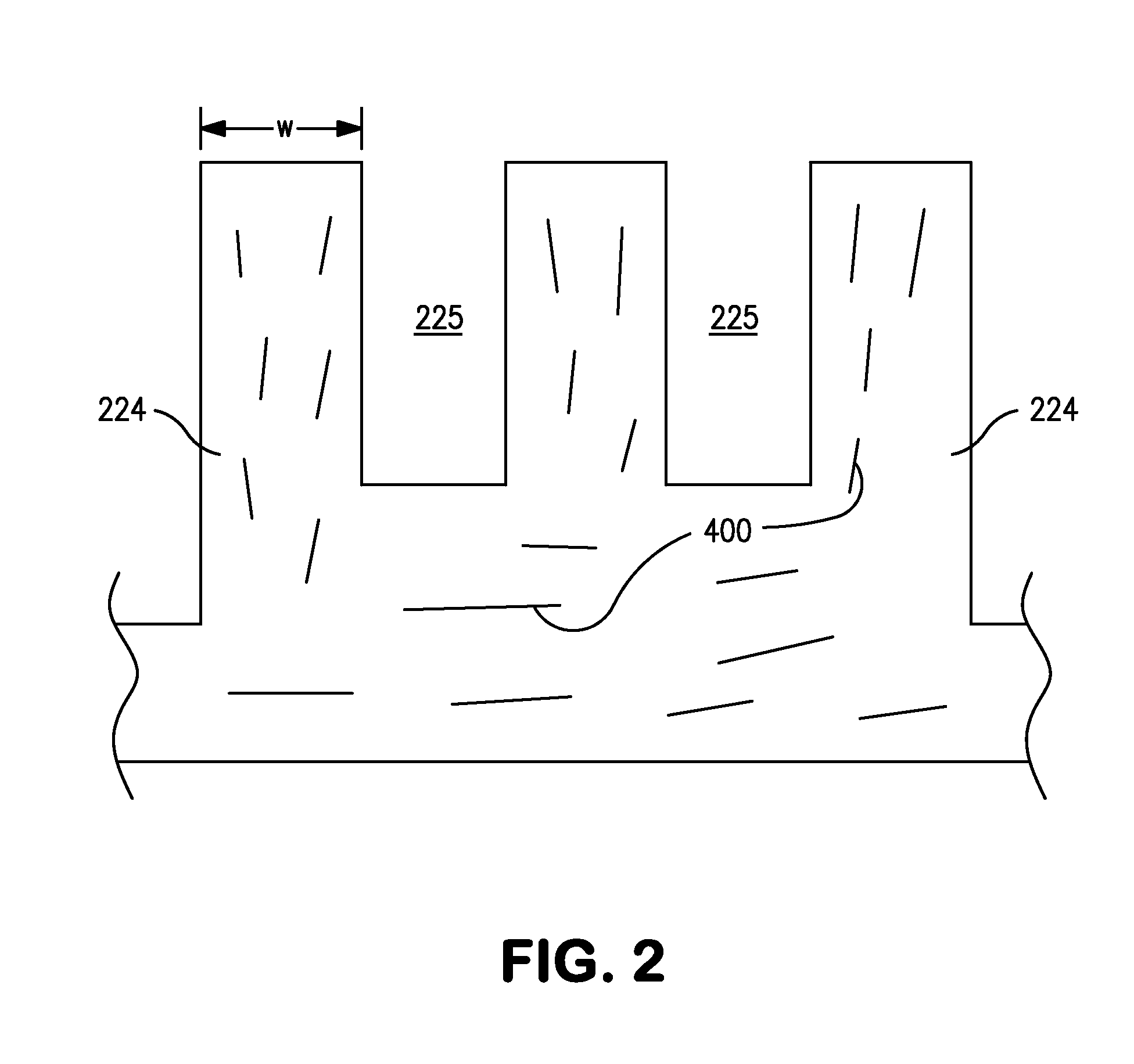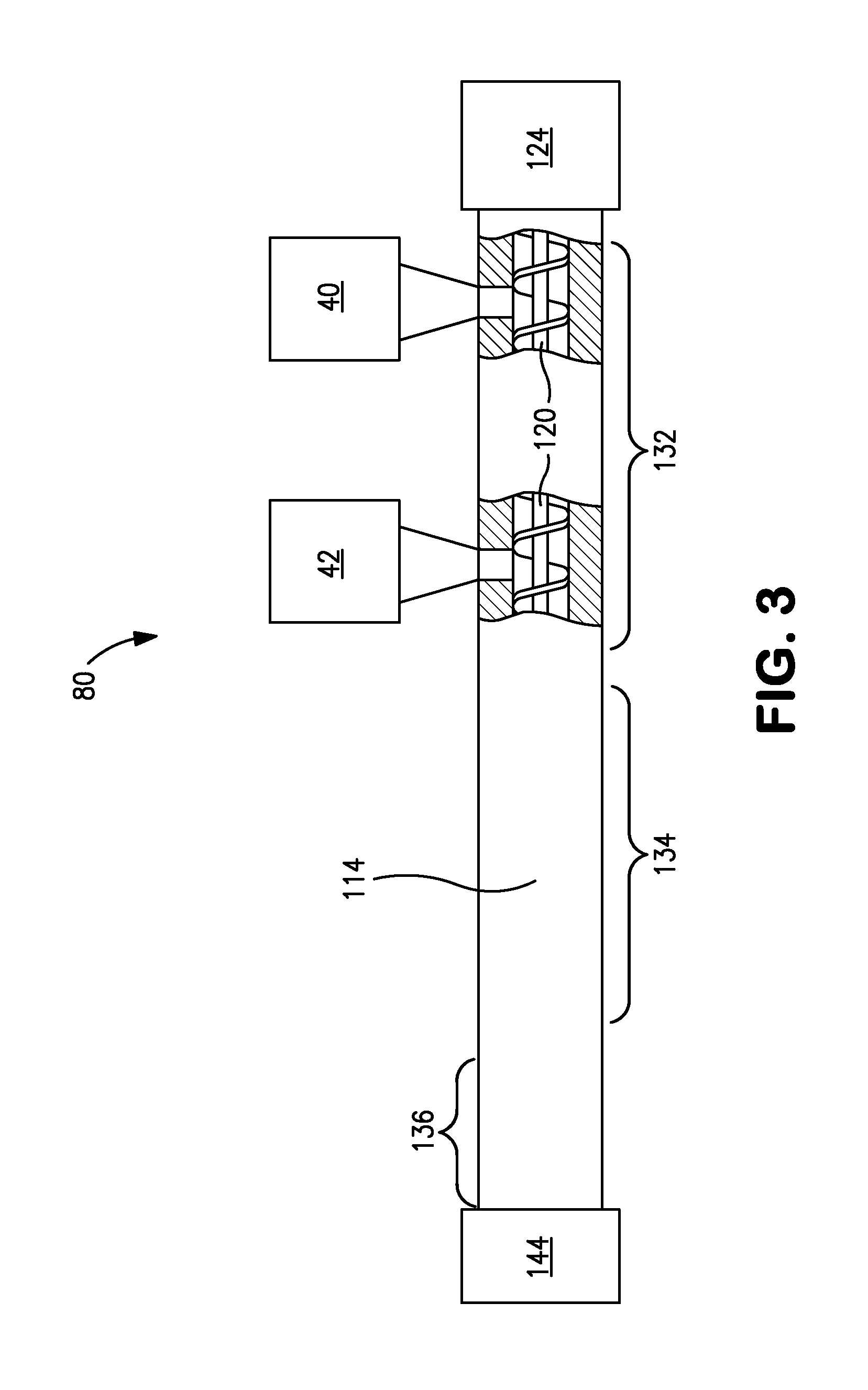Polymer Composition with Improved Flammability Performance
a technology of flammability and polymer composition, applied in the direction of liquid crystal composition, chemical apparatus and processes, etc., can solve the problems of poor mechanical and thermal properties, flowability or heat resistance, and sacrifice flowability
- Summary
- Abstract
- Description
- Claims
- Application Information
AI Technical Summary
Benefits of technology
Problems solved by technology
Method used
Image
Examples
example 1
[0081]A sample (Sample 1) is formed that contains 67.6 wt. % of a liquid crystalline polymer, 0.2 wt. % alumina trihydrate, 0.1 wt. % 4,4-biphenol, 10.0 wt. % glass fibers, 22.0 wt. % mica, and 0.1 wt. % of Hostanox® P-EPQ. A control sample is also formed that is identical to Sample 1, except that it lacks Hostanox® P-EPQ. To form the composition, pellets of the liquid crystalline polymer are dried at 150° C. overnight. Thereafter, the polymer is supplied to the feed throat of a ZSK-25 WLE co-rotating, fully intermeshing twin screw extruder in which the length of the screw is 750 millimeters, the diameter of the screw is 32 millimeters. The polymer is supplied to the feed throat by means of a volumetric feeder. The glass fibers, mica, and other additives are fed to Zones 4 and / or 6 of the extruder. Once melt blended, the samples are extruded through a dual-hole strand die, cooled through a water bath, and pelletized. The samples are then tested for mechanical and flammability proper...
example 2
[0083]A sample (Sample 2) is formed that contains 69.9 wt. % of a liquid crystalline polymer, 30.0 wt. % talc, and 0.1 wt. % of Hostanox® P-EPQ. A control sample is also formed that is identical to Sample 2, except that it lacks Hostanox® P-EPQ. To form the composition, pellets of the liquid crystalline polymer are dried at 150° C. overnight. Thereafter, the polymer is supplied to the feed throat of a ZSK-25 WLE co-rotating, fully intermeshing twin screw extruder in which the length of the screw is 750 millimeters, the diameter of the screw is 32 millimeters. The polymer is supplied to the feed throat by means of a volumetric feeder. The glass fibers, mica, and other additives are fed to Zones 4 and / or 6 of the extruder. Once melt blended, the samples are extruded through a dual-hole strand die, cooled through a water bath, and pelletized. The samples are then tested for mechanical and flammability properties. The results are set forth in Table 2 below.
TABLE 2SampleControl2Melt Visc...
example 3
[0084]Samples (Samples 3-4) are formed that contains 69.5 wt. % of a liquid crystalline polymer, 0.4 wt. % alumina trihydrate, 0.01 wt. %, 2,6-naphthalene dicarboxylic acid (“NDA”), 30.0 wt. % talc, and 0.05 to 0.1 wt. % of Hostanox® P-EPQ. A control sample is also formed that is identical to Samples 3-4, except that it lacks Hostanox® P-EPQ. To form the composition, pellets of the liquid crystalline polymer are dried at 150° C. overnight. Thereafter, the polymer is supplied to the feed throat of a ZSK-25 WLE co-rotating, fully intermeshing twin screw extruder in which the length of the screw is 750 millimeters, the diameter of the screw is 32 millimeters. The polymer is supplied to the feed throat by means of a volumetric feeder. The glass fibers, mica, and other additives are fed to Zones 4 and / or 6 of the extruder. Once melt blended, the samples are extruded through a dual-hole strand die, cooled through a water bath, and pelletized. The samples are then tested for mechanical and...
PUM
| Property | Measurement | Unit |
|---|---|---|
| temperature | aaaaa | aaaaa |
| melt viscosity | aaaaa | aaaaa |
| melt viscosity | aaaaa | aaaaa |
Abstract
Description
Claims
Application Information
 Login to View More
Login to View More - R&D
- Intellectual Property
- Life Sciences
- Materials
- Tech Scout
- Unparalleled Data Quality
- Higher Quality Content
- 60% Fewer Hallucinations
Browse by: Latest US Patents, China's latest patents, Technical Efficacy Thesaurus, Application Domain, Technology Topic, Popular Technical Reports.
© 2025 PatSnap. All rights reserved.Legal|Privacy policy|Modern Slavery Act Transparency Statement|Sitemap|About US| Contact US: help@patsnap.com



